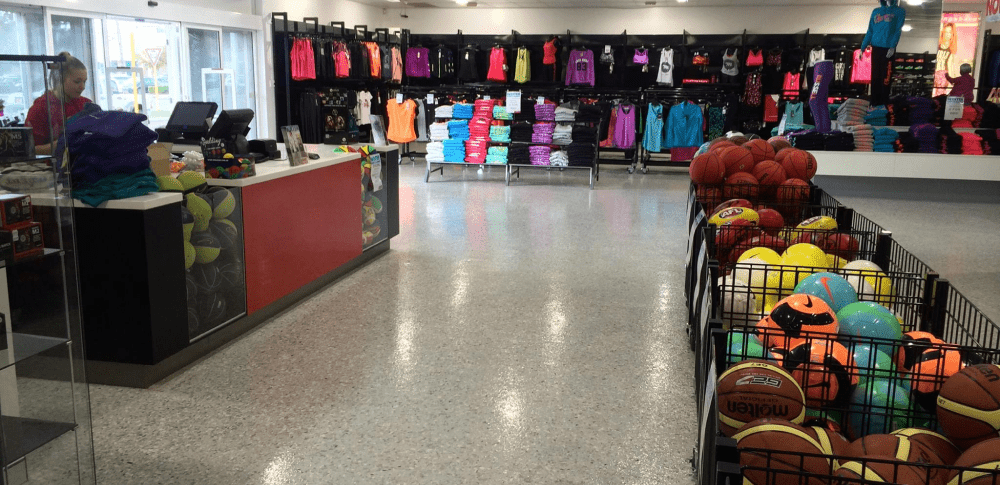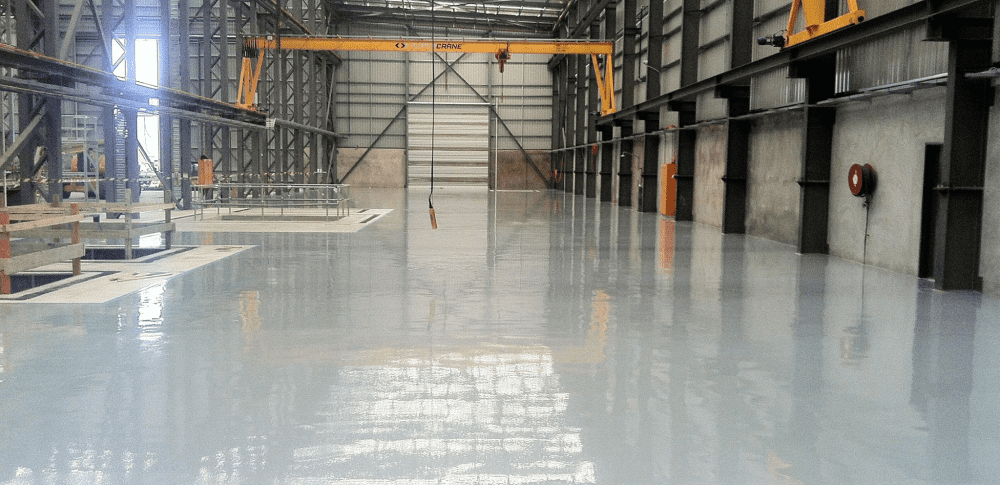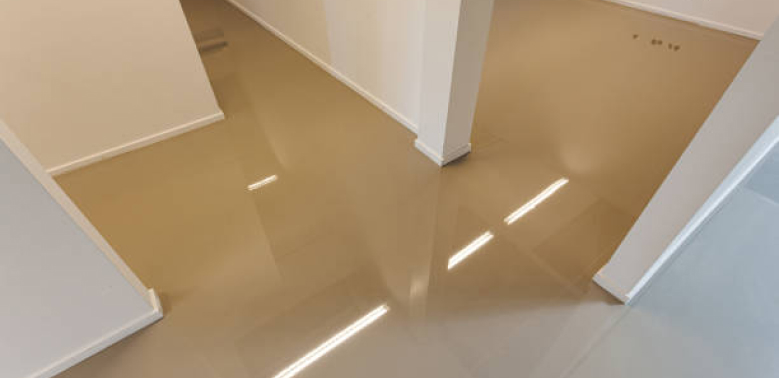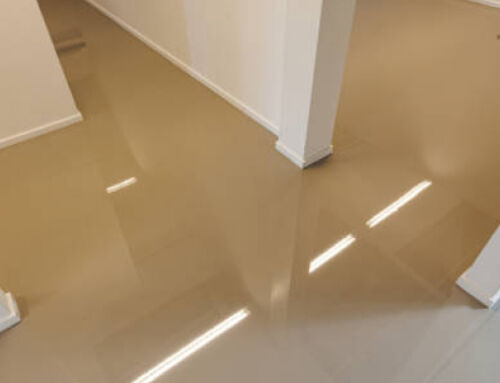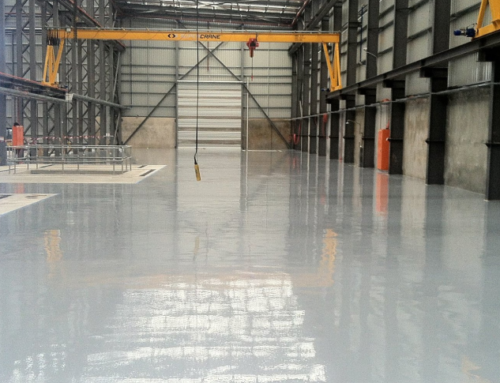For many commercial, manufacturing, and residential settings, epoxy flooring may be the best option.
However, there’s no one-size-fits-all when it comes to flooring materials and coatings, and epoxy flooring isn’t ideal for everyone. What’s perfect for you may not be right for someone else, so it helps to have a comprehensive pros and cons list… and we just happened to have one for you.
Here are the pros and cons to epoxy flooring that you should evaluate before making a purchase.
How does epoxy flooring work?
Epoxy flooring is created when polyepoxide resin and hardening agents, or curatives, are mixed together. When these two components are mixed, a chemical reaction occurs that bonds them to each other and to the floor. The flooring is then cured, creating a durable and long-lasting floor coating.
This is much different than a standard floor covering like paint – which simply covers a floor – as epoxy works to seal and protect the surface that it binds to. In other words, it’s not simply a cover, but also a protective coating option.
How long does epoxy flooring last?
Epoxy flooring typically lasts for 10-20 years, though it can last even longer with excellent maintenance and touch-ups. That said, there are many factors that can influence the lifespan of your epoxy flooring, including:
- The industry you work in: If you work in an industrial setting with harsh chemicals or heavy machinery, for example, it may wear down your epoxy floor more quickly. In these instances, applying a new topcoat can help significantly.
- Traffic: In the same vein, heavy machinery going back and forth or significant foot traffic in a commercial setting can cause more stress on your flooring, which can make it wear out faster.
- UV exposure: Epoxy flooring is extremely strong and durable. That said, prolonged UV exposure will degrade epoxy floor coating and eventually fade the floor and impact its longevity. If you are in a space with constant sunlight exposure, then, epoxy flooring may not be the best option for you.
- Maintenance: If you properly maintain your epoxy flooring – which means avoiding harsh cleaning chemicals, wiping down floors consistently, and repairing any damage right away – then they will last much longer.
- Your existing flooring: If you have strong flooring under your epoxy flooring, then it will last longer. If your floor has a low PSI or existing damage, on the other hand, it could make your epoxy coating less durable in the long-run.
What are the benefits of choosing epoxy flooring?

Pro: Cost-Effective
Overall, the cost of epoxy flooring per square metre is much lower than with other types of flooring. What’s more, you generally don’t have to remove your current flooring material to apply an epoxy coating, which saves significant labor costs.
Over time, too, epoxy flooring will not require significant replacement or maintenance costs. This more than makes up for the initial installation time and costs.
[NEW] Check out our Official Epoxy Price Guide here
Pro: Eco-Friendly
Despite the fact that it’s made using a chemical reaction, epoxy flooring is an eco-friendly flooring option for many reasons:
- It doesn’t require harsh chemical cleaners
- It doesn’t erode or flake over time, meaning it will not pollute the environment
- It doesn’t need to be replaced often, if at all, which means that it will require fewer materials and machines overall
Pro: Durable
Epoxy flooring is extremely durable. More specifically, it is:
- Strong: When rating flexural strength, most epoxy flooring options are stronger than concrete. That’s why epoxy flooring can withstand heavy traffic, heat, and extreme temperatures.
- Shock-resistant: Impacts that would cause problems on most floor surfaces will not harm epoxy coating. For this reason, you can use heavy machinery, tools, and more without significant concern.
- Chemical-resistant: Brake fluid, oil, noxious chemicals – none of it will seep through epoxy.
- Heat-resistant: The average heat limit of epoxy flooring is about 93 degrees celsius, or 200 degrees fahrenheit. That said, phosphorus-containing epoxies can withstand even higher heat. This makes epoxy floorings and appropriate option for garages, factories, and kitchens.
Pro: Easy to Maintain
Epoxy flooring is easy to maintain because it:
- Doesn’t have any grout, ridges, or seams that can trap dirt and debris
- Doesn’t create dust like other forms of cement. This makes it an easy-to-maintain flooring option.
- Can include an anti-microbial addititve for extra sanitization and cleanliness. This makes it an appropriate flooring choice for hospitals, pharmaceutical spaces, or food plants.
- Is scratch-resistant
- Only requires simple soap and detergent
- Is resistant to dust or salt build-up
Pro: Safe
The number one thing that most people are concerned about is safety. Epoxy is a safe flooring option because there are anti-slip options, which can avoid falls and accidents. Additionally, the surfaces reflect light, which can increase visibility and prevent spills or falls. Increased traction and static resistance can also decrease the chance of injury.
Pro: Stain and Water Resistant
With epoxy flooring, you don’t have to worry about warping or other forms of water damage. This can prevent floor distortion in the long-term.
Pro: Beautiful
Finally, epoxy flooring is generally smooth, shiny, and customisable in many beautiful colors and finishes, including metallic finishes, flake finishes, quartz finishes and more. These aesthetic options can transform and elevate any space where you put epoxy flooring.

What are the downsides to epoxy flooring ?
Con: Installation
The epoxy flooring installation process can be fairly long, and the epoxy will give off a chemical smell while your floors are drying. These can be dangerous if you’re exposed to them, so you will have to stay out of your space while your epoxy floors are being installed.
Con: Can Be Slippery
Though adding flakes or other additives and anti-slip coatings can many your epoxy flooring no-slip, standard epoxy flooring is completely smooth and seamless. This can make it slippery when wet, which isn’t suitable for all buildings and industries.
Con: You Need a Floor Underneath
You need to install a floor underneath your epoxy flooring, like concrete, steel, or cement. If you are building something from scratch, then, this may be an extra step that you don’t want to take.

